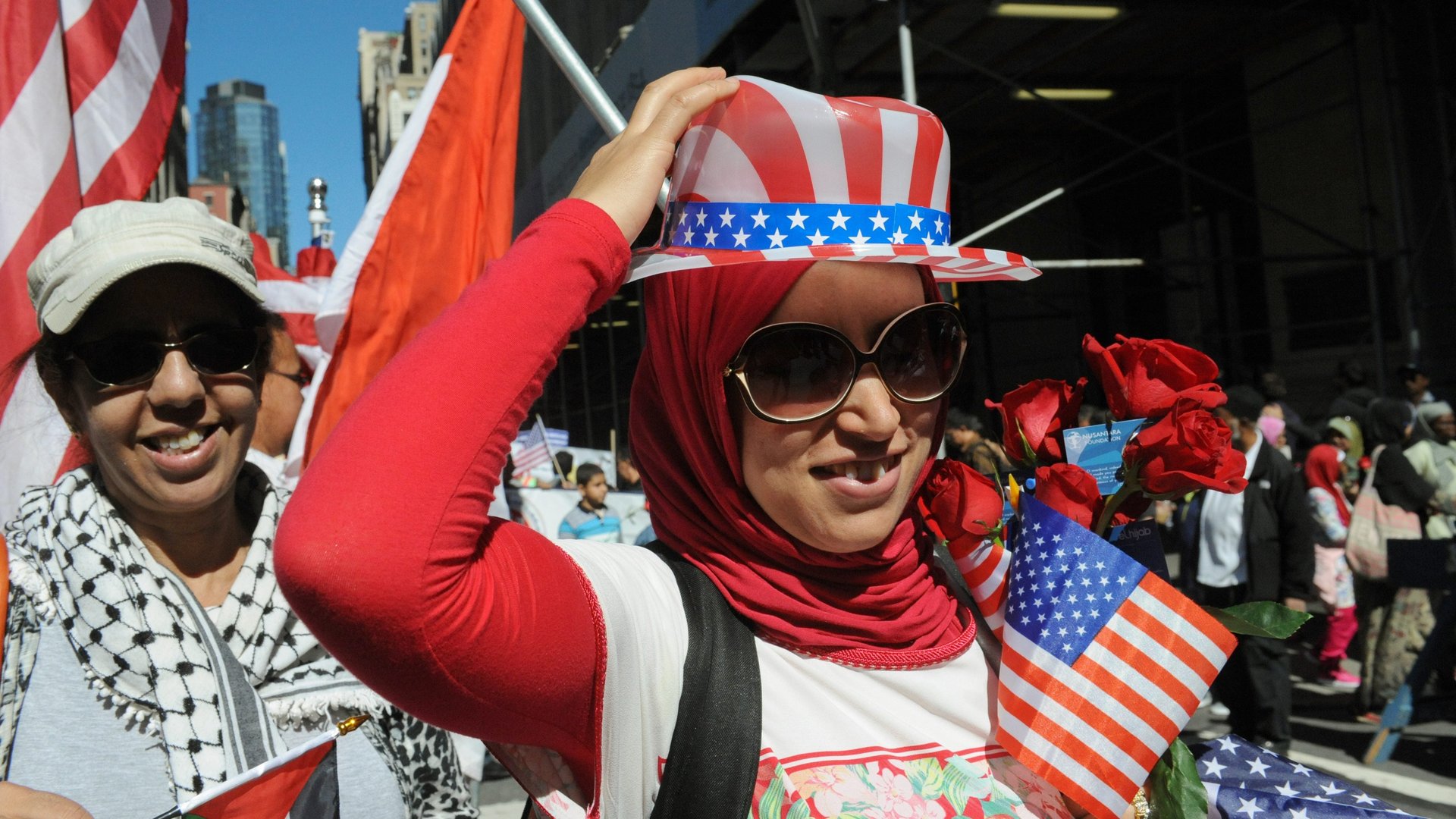Americans think there are 17 times as many Muslims living in the US as there actually are
How big is your country’s Muslim population? The answer seems to stump Americans—and the majority of the world.


How big is your country’s Muslim population? The answer seems to stump Americans—and the majority of the world.
As part of polling firm’s Ipsos Mori’s annual “Perils of Perception“ (pdf) report, Americans were asked to estimate what percentage of the US population is Muslim. The average answer was 17%, which is 17 times higher than the actual figure. In 2015, there were an estimated 3.3 million Muslims living in the US, according to Pew, making up about 1% of the total population.
That guesstimate has increased since the 2014 survey, when the average US response was 14%. (The question was not asked in 2015.)
This year’s report also asked US respondents to estimate how much the Muslim population will grow in the next four years. The average guess was that Muslims would grow to 23% of the total population by 2020. That level of increase, even from a false start of 17%, would translate to roughly 5 million Muslims a year coming to the US. That’s five times more people than the total number of green cards the US grants each year. The actual projection for US Muslims is 2.1% of the population—by 2050.
Americans aren’t alone in their ignorance. Ipsos Mori conducted its survey in 40 countries, surveying between 500 and 1,000 respondents in each, about their home demographics. Nearly every country overestimated its Muslim population. Only Indonesia and Turkey did not; they actually underestimated.
In France, where Muslims make up 7.5% of the total population, respondents’ guess was four times that (the average response was 31%). Ipsos Mori ranks countries by the percentage-point difference between respondents’ average guess and the actual figure, so it ranked France as having the biggest overestimate. British respondents thought Muslims made up 15% of the total population (actual figure 4.8%). And in South Africa, respondents, on average, thought Muslims accounted for 22% of the population, when they in fact make up 1.7%.